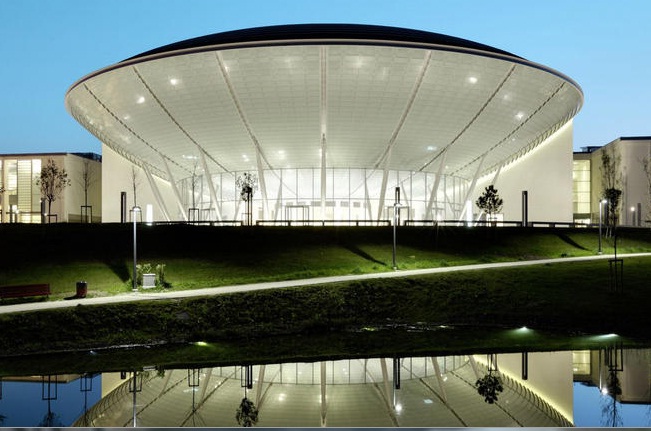Palacongressi Rimini, Italy
Architects: Volkwin Marg, Studio GMP Hamburg
Client: Società Palazzo dei Congressi S.p.A.
Services: Scheme Design & Detailed Design
Location: Rimini, Italy
Palacongressi Rimini is the biggest newly built conference centre in Italy and recognized as one of the most massive ones in Europe. It has been designed based on sustainable objectives, on technological innovation, on modularity principles of the spaces and on flexibility on the use of the spaces, with the possibility of hosting different type of events at the same time. The building is composed by two main volumes connected by an important number of foyer with their own facilities and three entrances. The first volume with its entrance below the shell-shape Amphitheatre, includes the big foyer on the ground floor and the shell-shape 1.540 seats Amphitheatre, subdividable in two conference rooms. The second volume, behind the first one, is connected to it through the foyer. It contains the main 4.700 seats conference room and it is subdividable in up to 6 independent spaces through the use of openable walls. On the ground floor there are also other modular conference rooms with 260 to 580 seats and breakout rooms. On the first floor there are other conference rooms with different dimensions, from 22 to 282 seats. In addition, there are other facilities, offices and restaurants. In addition, there are other facilities, offices and restaurants. The total usable areas are 29.000m2 with a maximum capacity of 39 conference rooms and 9.000 seats in total. The acoustic design has embraced the challenge to design a Conference Centre requesting a high level of flexibility in the use of the conference rooms and of the foyer areas, to be able to use the spaces simultaneously. The acoustic design has included the sound insulation of the envelope to control noise ingress from the external environment, the internal sound insulation between spaces, focusing on the design of the openable walls to ensure the suitable level of isolation between the conference rooms and allow for conferences to be carried out simultaneously. The design has also involved the control of building services noise within the spaces and at the noise sensitive receivers in the surroundings.




